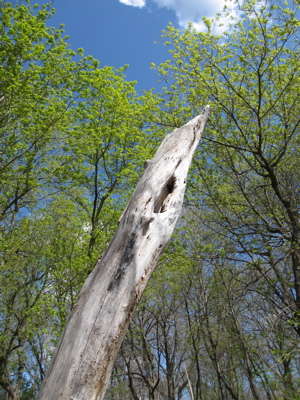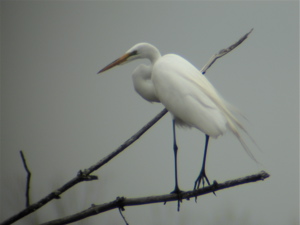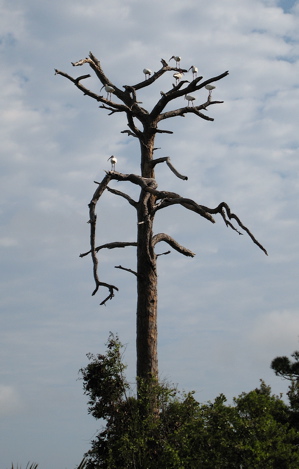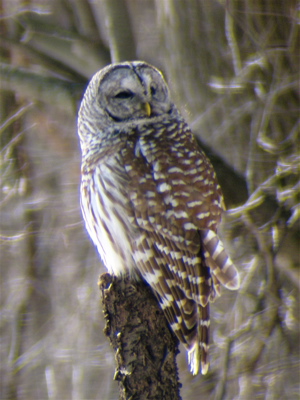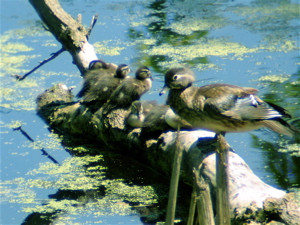 Once more into the Birdorable Guest Blogging contest! Today's entry is on a subject near and dear to the Birdchick's heart: having dead trees and brush on your property to attract birds.
The entry comes from Lili tod McMillan of the Behind the Falls Blog. Take it away, Lili!
Once more into the Birdorable Guest Blogging contest! Today's entry is on a subject near and dear to the Birdchick's heart: having dead trees and brush on your property to attract birds.
The entry comes from Lili tod McMillan of the Behind the Falls Blog. Take it away, Lili!
Have you hugged a snag today?
Does this image make you want to get a chainsaw or a pair of Swarovskis?
As any bird aficionado will tell you, snags such as this one, do not have to be an unattended issue in your backyard but rather a hidden magnet for all sorts of bird activity. Your neighbors might think you are being rather neglectful allowing a dead tree to stand while shedding its various parts over a long period of time but this is certainly less crazy then constructing an artificial snag.
In North America, 55 bird species are cavity nesters. Besides nesting, birds use dead trees for foraging, domain-watching, hunting and just plain hanging out without the hassles of dealing with leaves. If your dead tree or snag is strategically located, you are pretty much guaranteed a steady stream of bird visitors.
For birding humans, dead trees provide great viewing and photo opportunities.
An ibis "tower" in Sebastian Florida.
Many birds of prey, such as this red-tailed hawk, rely on the unobstructed view that a dead tree provides for finding food.
This barred owl is perched on a man-made snag of cut buckthorn. Buckthorn is an invasive small tree that is choking the understory of woodlands here in Minnesota. Creating a few of these buckthorn mini-perches is one way to make something positive out of a nuisance situation.
A wildlife pond is not complete without a few horizontal snags. Ducks love to rest on dead trees by the water's edge. Seeing the baby wood ducks each summer makes dragging an 100 pound snag over to the water worth all the work.
And for a non-birding use of snags, you have to give credit to Bruce Stillman who designed what I call "snaghenge".
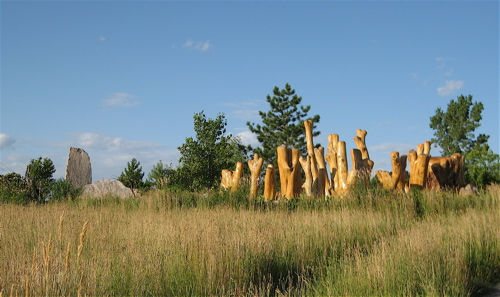
This work of art is part of the amazing Big Stone Mini Golf Course in Minnetrista, Minnesota.
Thanks for the great entry, Lili. And just because I know this is going to come up when Sharon gets home: Buckthorn is a huge problem in terms of native growth trees. Sharon recommends (and is fighting a seemingly neverending battle) against it, and her recommended solution is to try to eliminate it entirely, because it spreads like crazy.
All right, we'll be back tomorrow!

